Designer Montroy Andersen DeMarco Completes 16,000 SF Pem-America’s Headquarters and Showroom in Manhattan
“Our expanding business operations called for a new, larger showroom and offices. The dramatic new space designed by MADGI represents the quality of Pem’s merchandise, accommodates our frequently changing collections, and provides a comfortable work environment for our administrative and sales personnel,” said Pem-America’s Chuck Brannon, Chief Operating Officer.
According to MADGI principal Daniel Montroy, AIA, “Pem-America was facing an expiring lease and an office space that was too small for their growing needs at its current location. The firm’s new 16,000 square foot offices are located on the second and third floors of the building, within Pem’s newly-acquired office condominium.”
During the pre-design consultation, Pem executives expressed the desire for a dramatic space to both showcase frequently changing product collections and entertain customers during Home Fashion Products Association Market Week twice a year. “In response to these requirements, the architectural team developed a design that incorporates modern finishes and materials, extensive open spaces, and custom fixtures, explained MADGI project manager Ajay Waghmare, LEED AP. “These include the custom-designed, powered, movable wall panels, engineered by MADGI for flexibility and ease of reconfiguration.”
Established in 1993, Pem-America is a major supplier of soft home products to department stores, specialty home retailers, wholesale clubs, mass merchants, and dollar stores. Pem’s product lines include branded and private-label bedding, decorative pillows, blankets/throws/quilts, and bedspreads, as well as soft window, utility, and soft bath products.
In addition to MADGI, the project team included mechanical/electrical/plumbing (MEP) engineer Goldman Copeland Associates and structural Engineer Severud Associates.
Design
The main entrance and reception lobby on the second floor connects to the bank of three elevators. Over 50 percent of the 8,000 square feet second floor is devoted to showroom space. Approximately 40 percent, or 3,000 square feet, of the floor area is assigned to offices, primarily open-plan space with several private offices. This floor also features a conference room with glass walls.
The lobby flooring is natural wood, complimented by large-scale, vertical, perforated metal accent panels dividing the reception from the showroom space. The metal screens that stretch from floor to ceiling filter the light coming from the windows and create a hospitality-inspired feel in the area. The reception desk is comprised of the same materials, mimicking the metal accents and accentuating them with backlighting and mirrored glass. The reception area is furnished with sofas and chairs, and features LED pendant lighting fixtures.
The showroom, at approximately 4,500 square feet, houses a movable/flexible wall system designed by MADGI. The designers could not find an existing system that met Pem-America’s requirements, so they custom-designed one. “The client has to be able to change the configuration of its displays frequently,” said Shauna Dack, MADGI’s interior designer. “They need to easily reconfigure the displays to hold a combination of large and small items and entire collections, so flexibility is paramount,” she continued. Each rolling modular-build wall unit is encased at the base in a wood-and-metal frame with wheels, with drywall as the central surface of the wall. Each unit has an electrical outlet.
The showroom area features a black-painted ceiling and infrastructure and a suspended structural lighting grid from Litelab. Electrical outlets are strategically placed on the grid and when the walls are moved, they are anchored to the grid and to other movable walls for stability, and connected to electrical outlets on the ceiling. Movable track lighting is attached as well, and reconfigured as needed to accommodate changing layouts of the showroom.
The third floor is specified to be about 40 percent offices, again most being open-plan space with a few private offices. About 50 percent of this floor, too, is a showroom, with the custom modular wall units as on the second floor. The third floor also houses a pantry and an elevator lobby.
According to MADGI job captain Christopher White, RA, “The design team has specified an architectural L-shaped staircase to connect the two floors. Beginning in the northwest corner of the second floor, the stair’s first two steps have been designed as 10×10 foot platforms for product display.” The self-supporting stair structure is steel. Windows behind the stairs feature metal screens similar to those in the lobby. To create the stair, the construction crew cut a 10×15 foot hole in the third floor concrete slab. The third floor opening features a metal-and-cable handrail.
Source: Mann Report
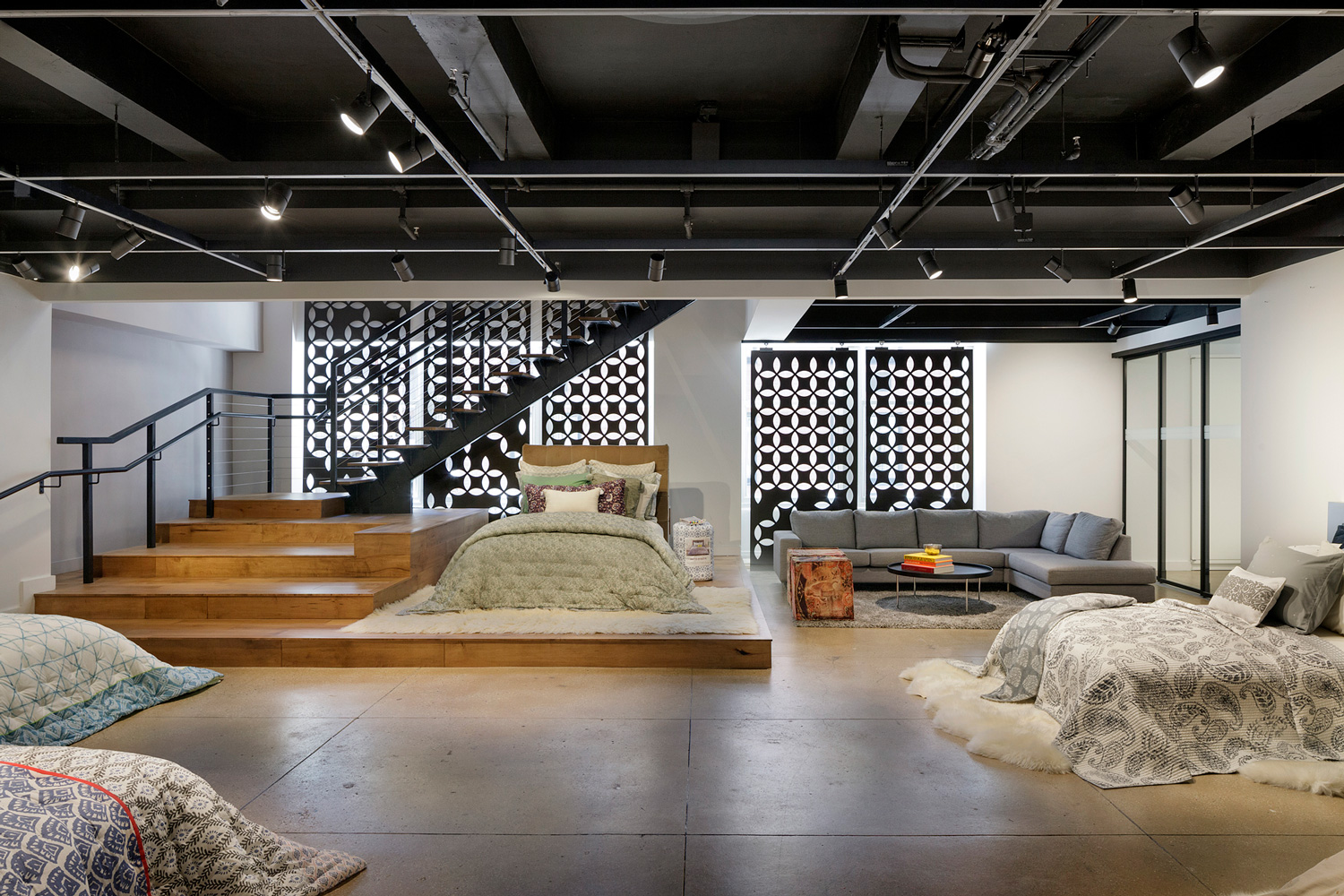
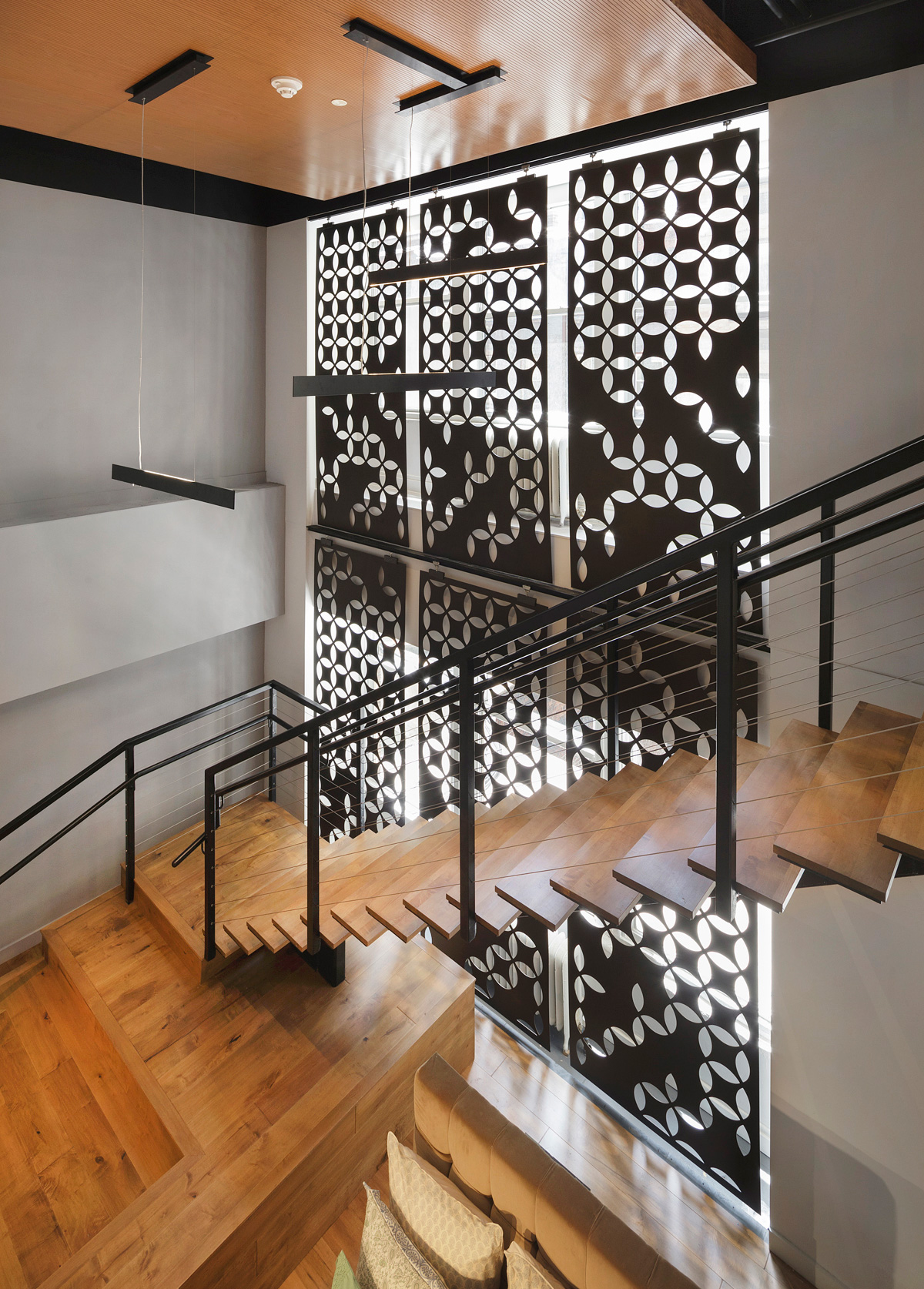
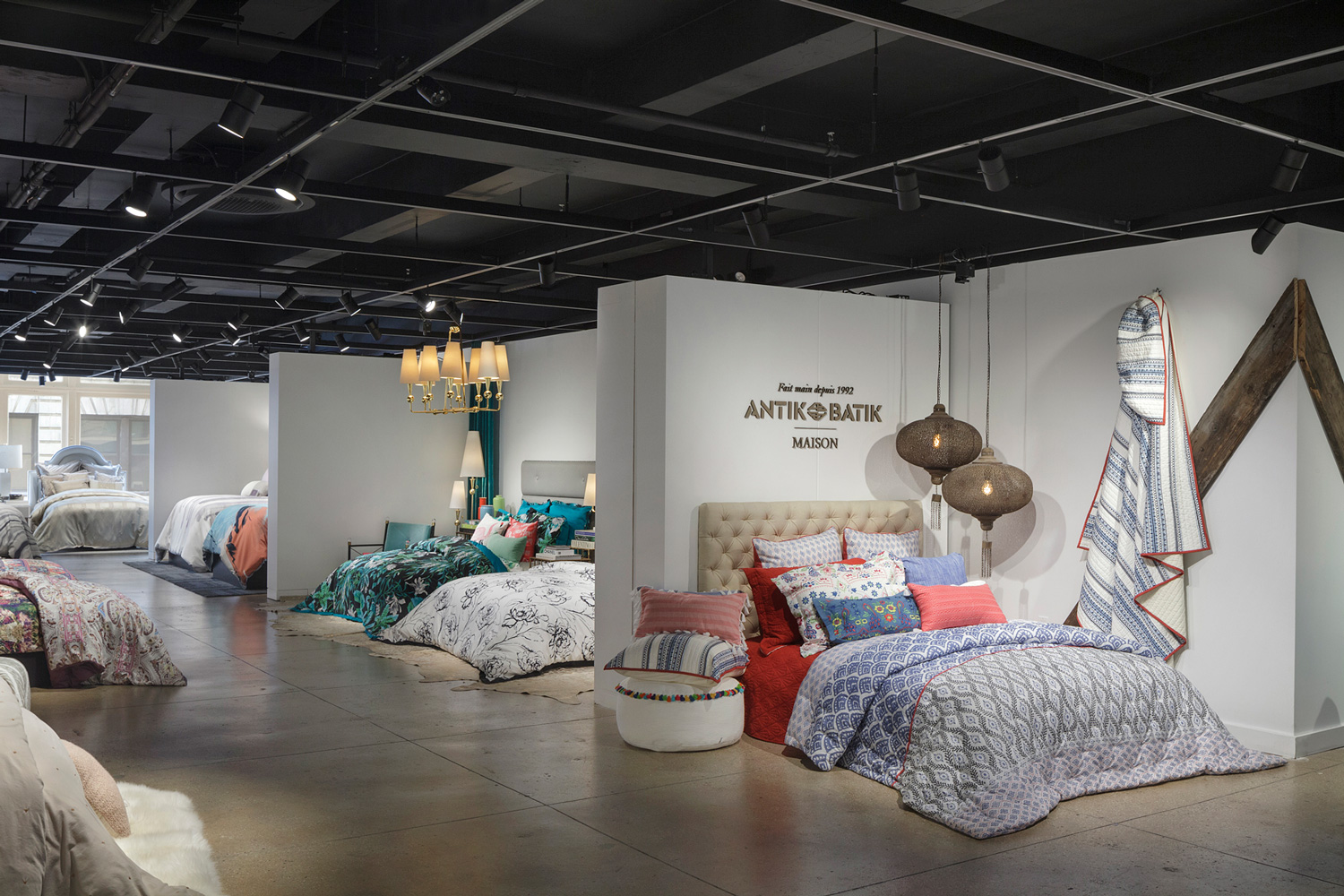
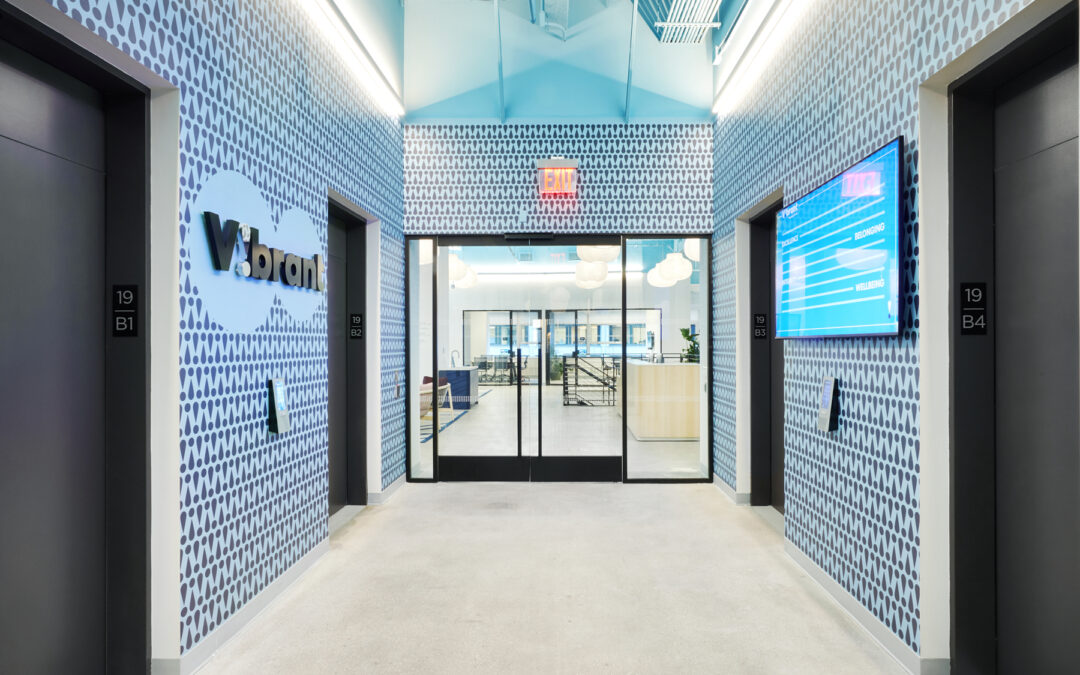
Vibrant Emotional Health’s Headquarters Receives 2024 Project Profile Award by Commercial Construction & Renovation (CCR) Magazine
Vibrant Emotional Health Headquarters, New York, New York Affiliate Designer: Montroy Andersen DeMarco, Contractor: Benchmark Construction The $10 million, two-story 60,000 SF office houses mental health and emotional counseling personnel, as well as all...
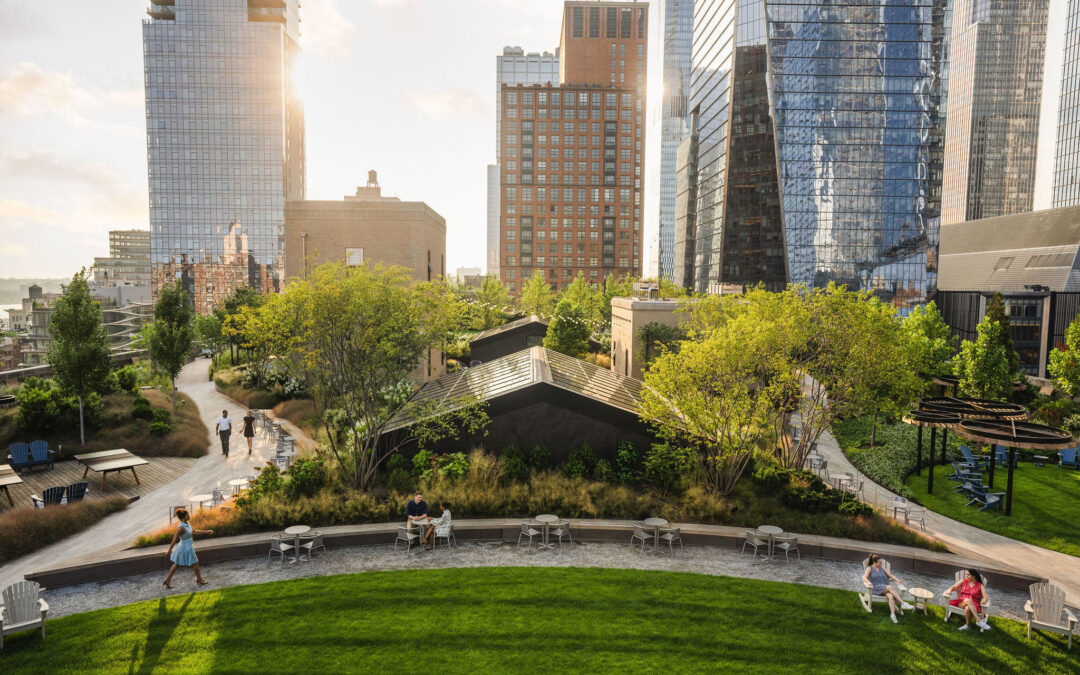
Morgan North Receives 2024 Honor Award for Excellence in Landscape Architecture
We are thrilled to announce USPS Morgan North's 2-acre Rooftop Landscape is the recipient of the American Society of Landscape Architects, New York Chapter's (ASLA-NY) prestigious "Honor Award". This award recognizes excellence in the practice of landscape...

NYREJ’s 2024 Women in Construction Spotlight: Jessica Gross, Associate AIA & WELL AP
New York Real Estate Journal's 2024 Women In Construction: Jessica Gross, Associate AIA, WELL AP, Designer & Furniture Manager, Montroy DeMarco Architecture LLP “Jessica is an accomplished designer, who excels in managing multiple projects at iconic...
